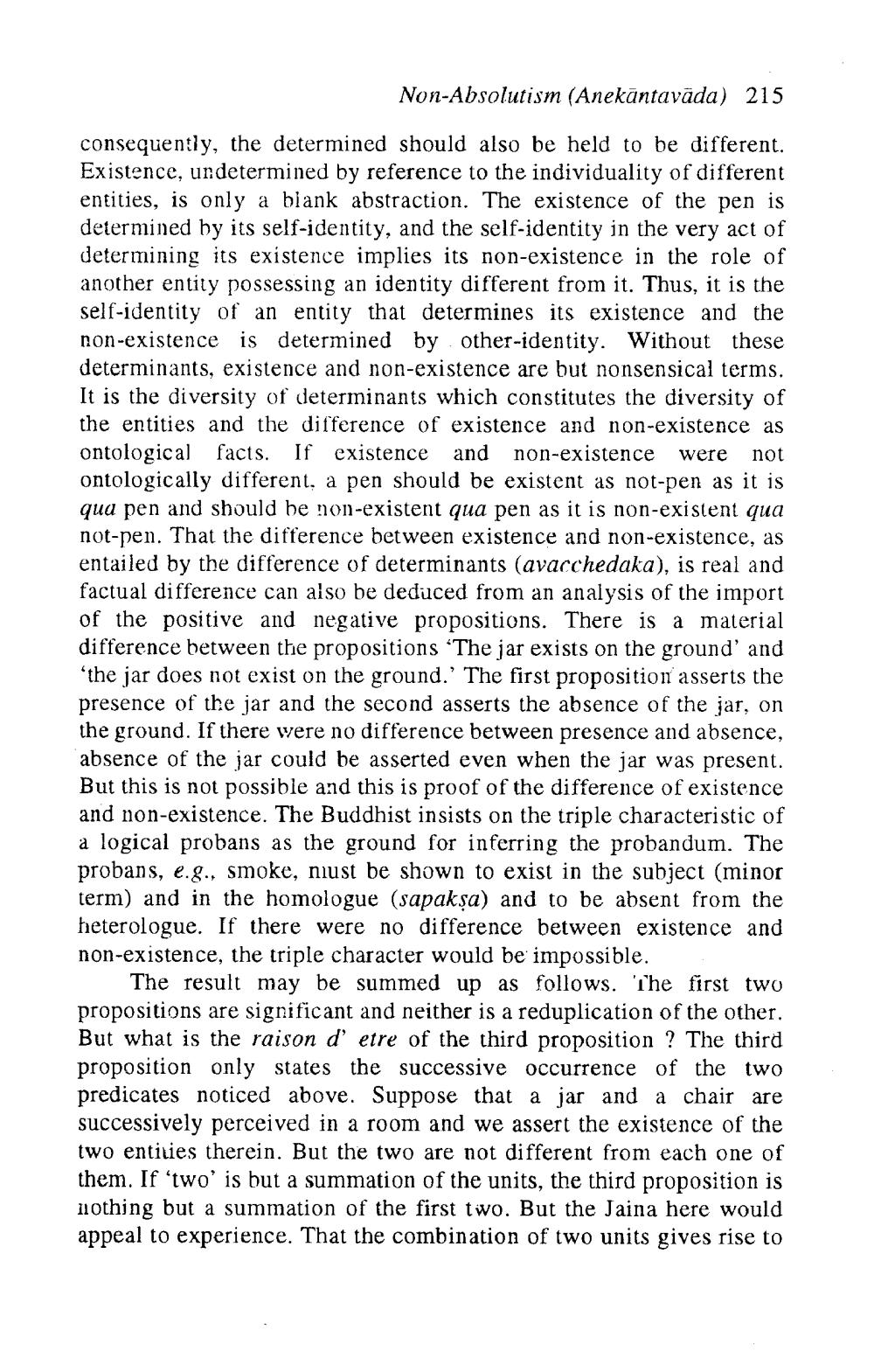________________
Non-Absolutism (Anekāntavāda) 215
consequently, the determined should also be held to be different. Existence, undetermined by reference to the individuality of different entities, is only a blank abstraction. The existence of the pen is determined by its self-identity, and the self-identity in the very act of determining its existence implies its non-existence in the role of another entity possessing an identity different from it. Thus, it is the self-identity of an entity that determines its existence and the non-existence is determined by other-identity. Without these determinants, existence and non-existence are but nonsensical terms. It is the diversity of determinants which constitutes the diversity of the entities and the difference of existence and non-existence as ontological facts. If existence and non-existence were not ontologically different, a pen should be existent as not-pen as it is qua pen and should be non-existent qua pen as it is non-existent qua not-pen. That the difference between existence and non-existence, as entailed by the difference of determinants (avacchedaka), is real and factual difference can also be deduced from an analysis of the import of the positive and negative propositions. There is a material difference between the propositions The jar exists on the ground and
the jar does not exist on the ground.' The first proposition asserts the presence of the jar and the second asserts the absence of the jar, on the ground. If there were no difference between presence and absence, absence of the jar could be asserted even when the jar was present. But this is not possible and this is proof of the difference of existence and non-existence. The Buddhist insists on the triple characteristic of a logical probans as the ground for inferring the probandum. The probans, e.g., smoke, niust be shown to exist in the subject (minor term) and in the homologue (sapaksa) and to be absent from the heterologue. If there were no difference between existence and non-existence, the triple character would be impossible.
The result may be summed up as follows. The first two propositions are significant and neither is a reduplication of the other. But what is the raison d'etre of the third proposition ? The third proposition only states the successive occurrence of the two predicates noticed above. Suppose that a jar and a chair are successively perceived in a room and we assert the existence of the two entities therein. But the two are not different from each one of them. If 'two' is but a summation of the units, the third proposition is nothing but a summation of the first two. But the Jaina here would appeal to experience. That the combination of two units gives rise to




